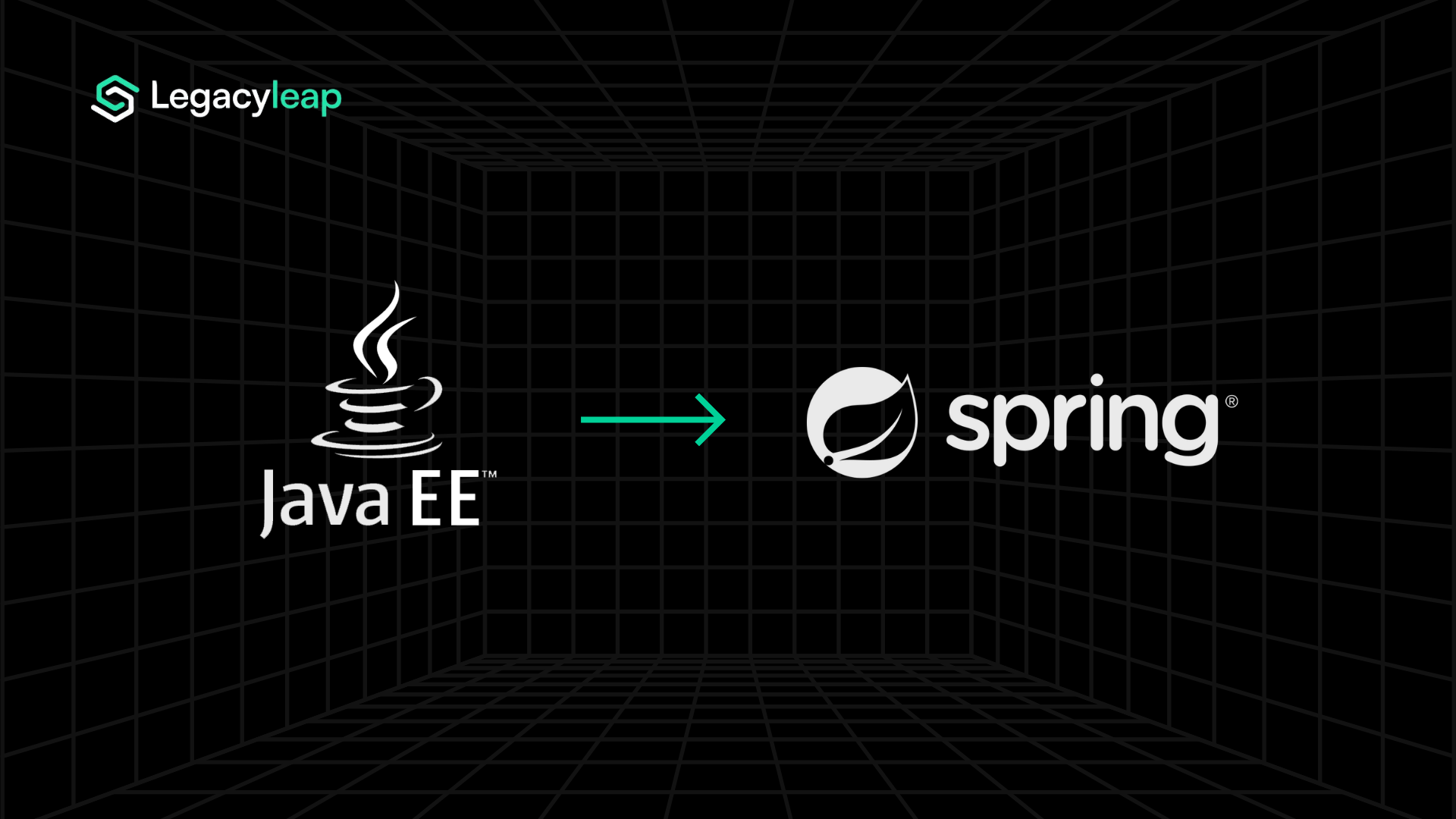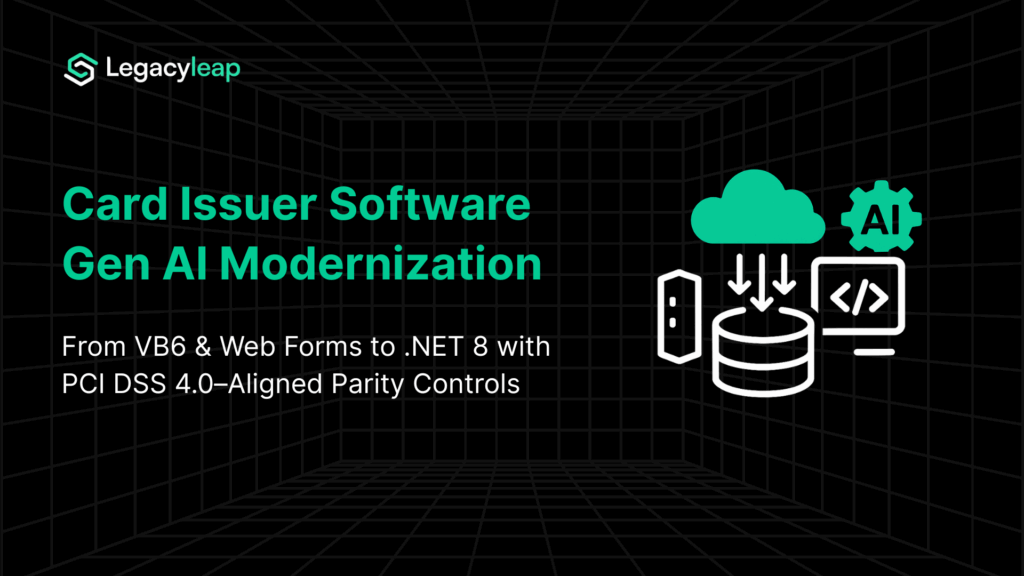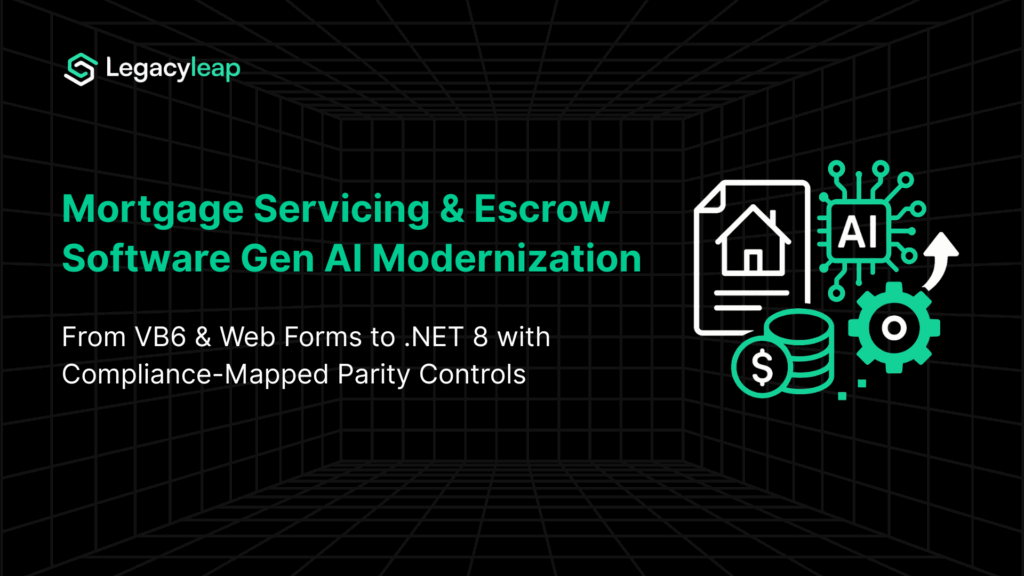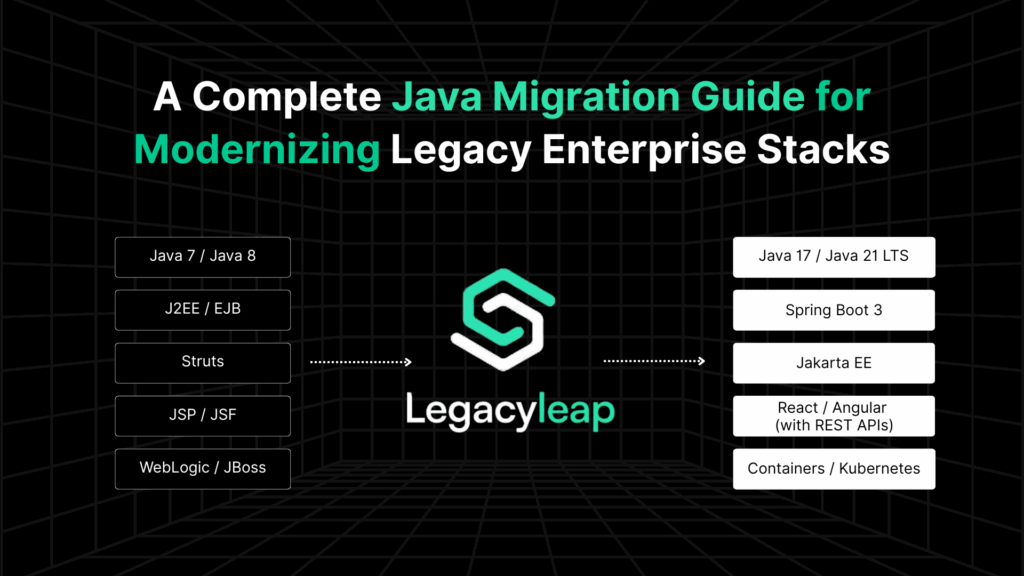Introduction: Why Enterprises Must Move Beyond Java EE
Java EE once powered the backbone of enterprise applications in banking, telecom, and insurance. But today, it represents mounting technical debt:
- Heavyweight app servers like WebLogic, JBoss, and GlassFish slow down deployments and complicate containerization.
- EJBs and JNDI dependencies introduce tight coupling that limits modularity.
- Rigid XML-driven configuration makes developer productivity lag behind modern frameworks.
- The Jakarta EE roadmap continues, but innovation has shifted decisively to migrating to Spring Boot.
Meanwhile, Spring Boot has become the default framework for microservices and cloud-native Java applications. The real challenge now is figuring out how to move safely, predictably, and without breaking mission-critical systems.
Java EE vs Spring Boot: Why Modern Enterprises Are Migrating
| Capability | Java EE | Spring Boot |
| Footprint | Heavy app servers (WebLogic, JBoss, GlassFish) | Lightweight, embedded server (Tomcat/Jetty) |
| Cloud readiness | Difficult to containerize | Optimized for Docker, Kubernetes, CI/CD |
| Developer productivity | XML-heavy, rigid deployments | Convention-over-configuration, fast startup |
| API modernization | EJBs, JAX-RS, SOAP-heavy services | REST, Reactive, and event-driven APIs |
| Ecosystem | Slower-moving Jakarta EE | Rich ecosystem: Spring Cloud, Spring Data, Spring Security |
| Cost | Expensive licensing and support for enterprise app servers | Open-source, reduced licensing costs, lower infra overhead |
| Scalability | Vertical scaling tied to heavy servers | Horizontal scaling built-in with microservices and container orchestration |
| Security Benefits | Legacy security models (JAAS, vendor add-ons) | Modern Spring Security, OAuth2, SSO, ongoing patch cadence |
For CIOs and CTOs, Spring Boot represents agility, resilience, and long-term viability, things Java EE increasingly cannot deliver.
Enterprises seeking agility and performance have reason: recent reports show apps using Spring’s transaction management vs EJB see up to 30% better performance in high-load scenarios.
Java EE to Spring Boot Migration Challenges and Strategies
Despite the benefits, migrating Java EE apps is rarely straightforward. Common blockers include:
- EJB refactoring: Converting EJBs into lightweight Spring services or POJOs.
- Pro Tip: Start with stateless EJBs as they have fewer dependencies and are easier to re-platform into Spring services, giving you early wins without breaking session management.
- Pro Tip: Start with stateless EJBs as they have fewer dependencies and are easier to re-platform into Spring services, giving you early wins without breaking session management.
- JNDI and resource lookups: Mapping to Spring’s dependency injection and bean lifecycle management.
- Pro Tip: Watch out for shared JNDI lookups. Migrate these into Spring’s dependency injection model early, or they’ll become bottlenecks later in the process.
- Pro Tip: Watch out for shared JNDI lookups. Migrate these into Spring’s dependency injection model early, or they’ll become bottlenecks later in the process.
- Vendor lock-in: Shifting from WebLogic/JBoss to container-native Spring Boot deployments.
- Pro Tip: Don’t carry vendor lock-in forward. Replace proprietary app server services (like WebLogic JMS or JTA) with Spring-compatible, open alternatives before scaling the migration.
- Pro Tip: Don’t carry vendor lock-in forward. Replace proprietary app server services (like WebLogic JMS or JTA) with Spring-compatible, open alternatives before scaling the migration.
- Data layer modernization: Refactoring Hibernate/JPA logic for better compatibility.
- Testing gaps: Many Java EE systems lack comprehensive regression coverage.
- Pro Tip: Bake in test scaffolding before you refactor. Parity checks on business logic prevent regressions when moving from EJB transactions to Spring’s transactional annotations.
Traditional “big bang” rewrites are risky and often lead to budget overruns or stalled projects. A refactoring-first strategy (incrementally moving modules to Spring Boot while coexisting with legacy components) offers a safer path.
Patterns like the Strangler Fig or Incremental Modernization allow controlled cutovers, ensuring systems continue to run while modernization progresses.
Migration Checklist: From Java EE to Spring Boot
Moving from Java EE to Spring Boot is a phased journey that requires planning, discipline, and safeguards at every step. To help you frame the process, here’s a practical checklist that captures the critical stages of migration along with key considerations to keep your project on track.
| Step | What to Do | Key Considerations / Pro Tips |
| Assess & Plan | Inventory EJBs, dependencies, container features (JNDI, JMS, etc.) | Pro Tip: Use lightweight PoCs for critical modules first. |
| Modernize Transaction Management | Move from container-managed EJB transactions to Spring transactions or JTA implementations | Pro Tip: Measure throughput under load pre- and post-migration. |
| Refactor Services / Components | Extract services (REST, batch, etc.), replace EJBs, decouple UI, remove vendor lock-in | Pro Tip: Start with stateless modules or side-tasks. |
| Testing & Parity | Auto-generate integration & regression tests, ensure behavior equivalent | Pro Tip: Use monitoring during rollout to catch drift. |
| Deployment & Rollout | Canary / staged rollout, rollback plan, observability | Pro Tip: Use feature flags or traffic splitting where possible. |
Each stage builds on the last, and skipping ahead usually creates more problems than it solves. The key is to start small, validate early, and keep rollback paths ready. With this discipline, enterprises can move from Java EE to Spring Boot systematically, not in one “big bang,” but in manageable, verifiable steps.
Why Gen AI Changes the Migration Playbook
Conventional tools accelerate pieces of the journey but leave enterprises guessing about cost, scope, and delivery. Gen AI, applied with compiler-grade validation, changes this equation:
- Complete dependency mapping: Graph-based analysis identifies every EJB, servlet, and inter-service call before migration begins.
- Automated refactoring: EJB session beans → Spring services; servlets → Spring MVC controllers; XML configs → annotations.
- Validation guardrails: Compiler checks and SME oversight ensure migrated code compiles and runs to spec.
- Parity assurance: AI-generated unit and API tests validate that business behavior remains identical after migration.
This is modernization with predictability built in, not left to chance.
Case Snippet: In one EJB3 modernization for a transport technology leader, Legacyleap applied Gen AI with AWS services to accelerate analysis and refactoring. Code comprehension and business logic extraction cycles were cut by 50%, while risk assessment ensured stability throughout migration.
Legacyleap in Action: Verified Refactoring Outcomes
Migrating Java EE apps is about de-risking fragile, business-critical systems. Legacyleap was built for this challenge.
- Enterprise-scale comprehension: Parses millions of lines of Java into abstract syntax trees (ASTs) and dependency graphs.
- Inside-enterprise execution: Runs fully within your environment. No external API calls, meeting regulatory and compliance needs.
- Human-in-the-loop governance: AI-driven outputs pass through compiler guardrails and explicit engineer checkpoints.
- Beyond refactoring: Auto-generates regression test suites, Swagger/OpenAPI documentation, and Kubernetes manifests.
The impact in practice:
- 100% system dependency coverage before code changes begin.
- 70% automation in EJB → Spring services migration.
- 90%+ automated regression test coverage for functional parity.
- Predictable timelines and cost modeling upfront. No “unknown unknowns.”
Conclusion: A Verified Path to Spring Boot
Remaining on Java EE means rising maintenance cost, brittle architectures, and lost agility in the cloud era. Spring Boot offers the opposite: faster iteration, container readiness, and a vibrant ecosystem.
But migration must be done carefully. Rewrites are too risky; partial tools fall short. The refactoring-first approach, powered by Legacyleap’s Gen AI platform, ensures safer, faster, and verifiable modernization outcomes.
Start with a $0 Assessment to get a dependency map, risk scan, and feasibility plan for your Java EE → Spring Boot migration today.
FAQs
Q1. Why should enterprises migrate from Java EE to Spring Boot?
Spring Boot offers faster startup times, easier containerization, better ecosystem support, and reduced operational overhead compared to Java EE.
Q2. What’s the difference between refactoring and rewriting in migration?
Rewriting discards existing business logic, risking errors and delays. Refactoring preserves logic while modernizing infrastructure, safer for enterprise-critical systems.
Q3. How do you handle EJB migrations?
AI-assisted refactoring converts EJBs into Spring services/POJOs, while preserving transactional and dependency logic.
Q4. Can Gen AI fully automate the migration?
No, but with compiler guardrails, Gen AI can automate up to 70% of code transformation, with human oversight ensuring compliance and quality.
Q5. How does Legacyleap guarantee functional parity?
By auto-generating unit, API, and regression tests from legacy behavior, Legacyleap validates that the new Spring Boot system behaves exactly like the old Java EE app.








